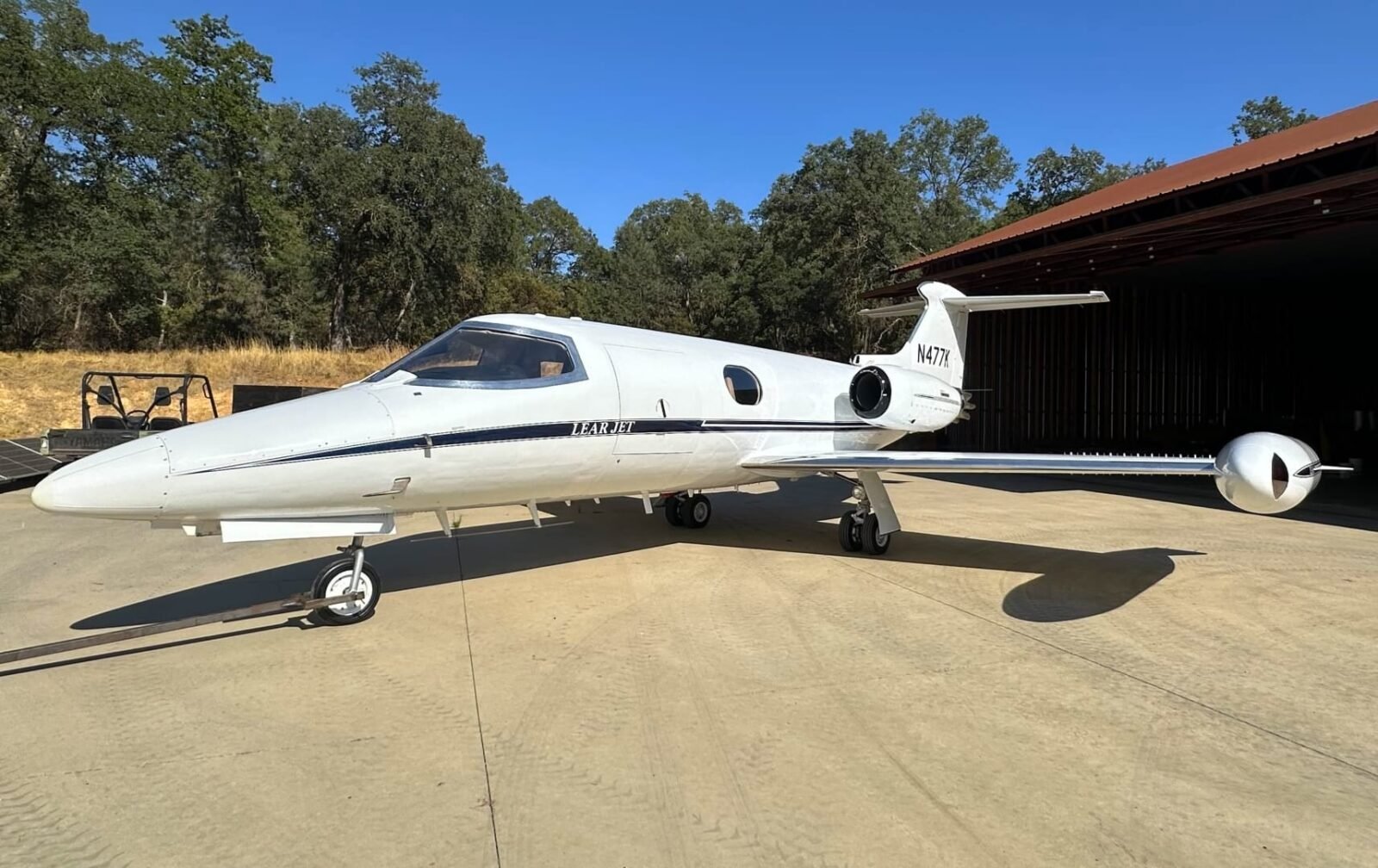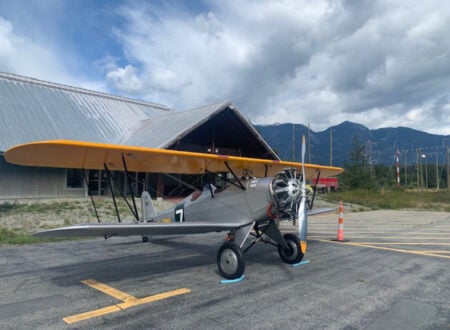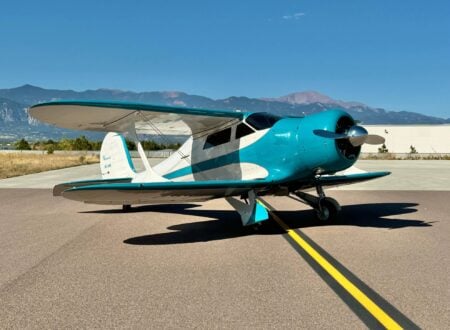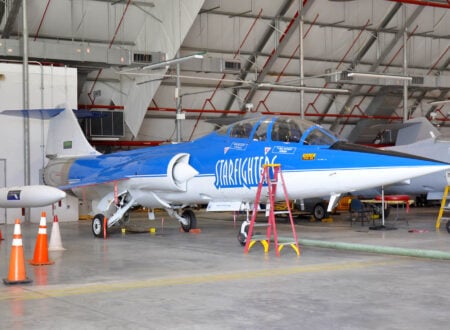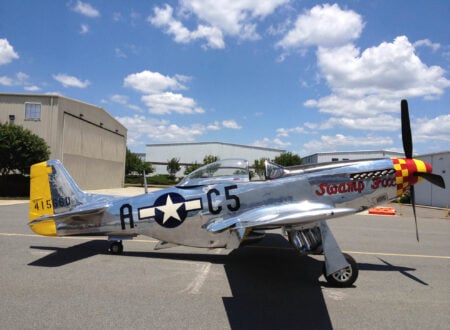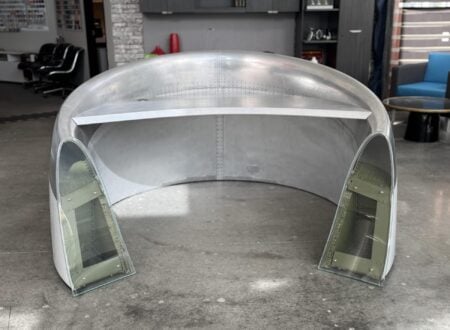This is an original Learjet 23, it was the first production model released by Lear Jet and it’s widely regarded as the first commercially successful private light jet.
The 23 model was based on the Swiss FFA P-16 strike-fighter aircraft, and over 100 were built before Learjet switched to newer, larger models. Many of the world’s most famous and influential people flew on the Learjet 23 in the 1960s and 1970s.
Fast Facts: The Learjet 23
- The Learjet 23 is widely viewed as the first commercially successful private light jet, effectively creating the modern business jet category. It first flew in 1963 and gained FAA certification in July 1964. Compact, fast, and purpose built for executives and celebrities, it set expectations for speed, altitude, and point to point flexibility.
- Originating from the Swiss FFA P 16 aircraft, Bill Lear and his team heavily reworked the design, moving the program to Wichita in 1962. The Model 23 used two General Electric CJ610 turbojets, cruised near 520 mph, reached above 40,000 feet, had 12,499 lb MTOW, and about 1,800 mile range.
- Production ran from 1963 to 1966 with just over 100 built, before the improved 24 and 25 arrived. Early buyers included corporations, charter operators, and figures like Frank Sinatra. Noise rules later limited CJ610 fleets unless fitted with hush kits.
- The Model 23 shown in this article is claimed to be the only FAA Stage 3 compliant and only airworthy Learjet 23. It has hush kits, RVSM, ADS B, GPS, TAWS, and A, B, C, D plus 12 year inspections were completed June 2025. It reportedly flew Bardot and Sachs to their Las Vegas wedding in 1966.
History Speedrun: The Learjet 23
When the Learjet 23 first flew in 1963, it essentially created an entirely new category of aircraft – the modern light business jet. Until then, executives and celebrities mostly either relied on converted military aircraft or larger piston-engined aircraft equipped for executive travel.
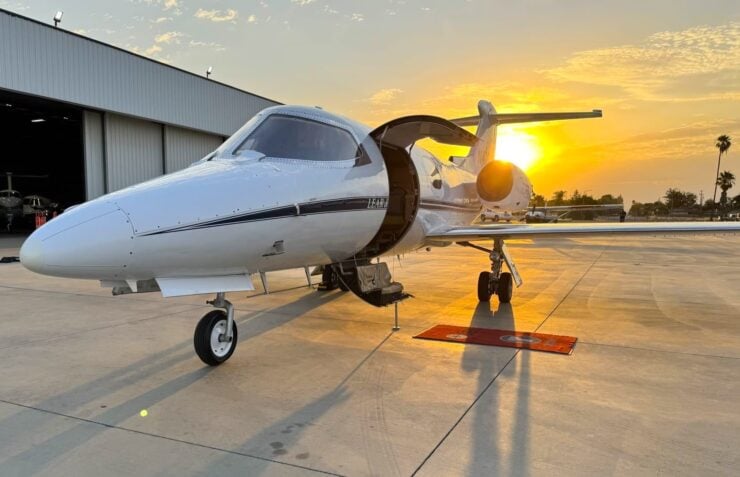

Bill Lear, an entrepreneur with a background in radios and avionics, saw an unfilled niche in the market for a small, fast jet designed exclusively for business use, and for use by wealthy individuals and celebrities.
The story of the Learjet 23 really began over in Switzerland, where Lear acquired the rights to a lightweight twin-engine fighter project developed by the Swiss company FFA – the P-16 strike-fighter aircraft.
Working with his engineering team, he reworked the design heavily, soon relocating the program to Wichita, Kansas, where Lear Jet Corporation was formed in 1962. The new aircraft borrowed the fighter’s swept wing and general layout but was purpose-built for civilian travel, with a two-seat cockpit and seating for between 6 and 8 passengers.
By October 1963, the first prototype was airborne, and by July 1964 it had secured FAA certification – an unusually fast turnaround that had been helped along by the fact that the plane was based on a proven, pre-existing design.
The Learjet 23 was compact and its performance rivaled many front-line military aircraft of the day. It was powered by a pair of General Electric CJ610 turbojet engines – civil derivatives of the J85 military powerplant – it could cruise near 520 mph (Mach 0.8) and had a service ceiling above 40,000 feet. That allowed passengers to fly well above most weather as well as commercial air traffic – often saving significant time on business trips.
The Model 23 had a maximum takeoff weight of 12,499 lbs, deliberately kept just under the 12,500 lb threshold to avoid additional FAA certification requirements. The cabin was pressurized and fitted with club-style seating, though space was limited and amenities spartan compared with later jets. Range was ~1,800 miles with four passengers, more than enough for most domestic US city pairs.
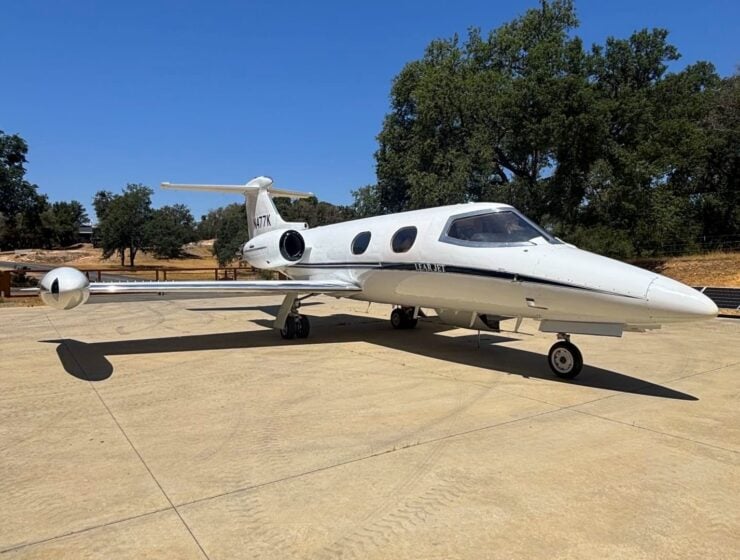

Production started quickly after certification. The first customer delivery occurred in October 1964, and early buyers included corporations, charter services, and private owners – among them Frank Sinatra, who gave the jet a significant boost of celebrity credibility.
Over its short run from 1964 to 1966, just over 100 Learjet 23s were built. It was replaced by improved versions like the Learjet 24 and 25, which further improved range, payload, amenities, and performance.
The Learjet 23 did have its limitations – the CJ610 turbojets were powerful but thirsty, limiting range and efficiency compared with later turbofan engines. The aircraft’s small size also made it a tight fit for executives expecting more comfort.
Its handling, while praised by pilots for fighter-like responsiveness, could be demanding for crews accustomed to slower piston aircraft – still, it was a leap ahead of competitors in the private aircraft industry, it established a benchmark that forced Cessna, Dassault, and many others to accelerate their own business jet programs.
Accidents also shaped the aircraft’s reputation – a prototype crashed during a demonstration in June 1964, just weeks before certification, leading to further scrutiny of the design – though it was determined to be pilot error. Its overall record proved respectable for an early jet and many examples remained in service for decades, though noise regulations eventually grounded the CJ610-powered fleet in the United States unless retrofitted with hush kits to meet mandated noise levels.
Only a handful of Learjet 23s survive today, some in museums like the Pima Air & Space Museum in Arizona or preserved by private owners. They were the proof of concept that a dedicated corporate/private jet could be viable, and the Learjet name went on to become synonymous with business aviation – every private jet that followed owes something to the little Wichita-built aircraft that started it all.
The Learjet 23 Shown Here
The aircraft you see here is a Learjet 23, and importantly it’s listed as being the only one of its kind that is FAA Stage 3 noise regulation-compliant, and the only airworthy Learjet 23 in the world.
It’s said to meet FAA maintenance and operational standards, A, B, C, D and its 12-year airframe inspections were completed at Trine Aerospace in June of 2025. It’s equipped with engine hush kits as well as RVSM, ADS-B, GPS and TAWS.
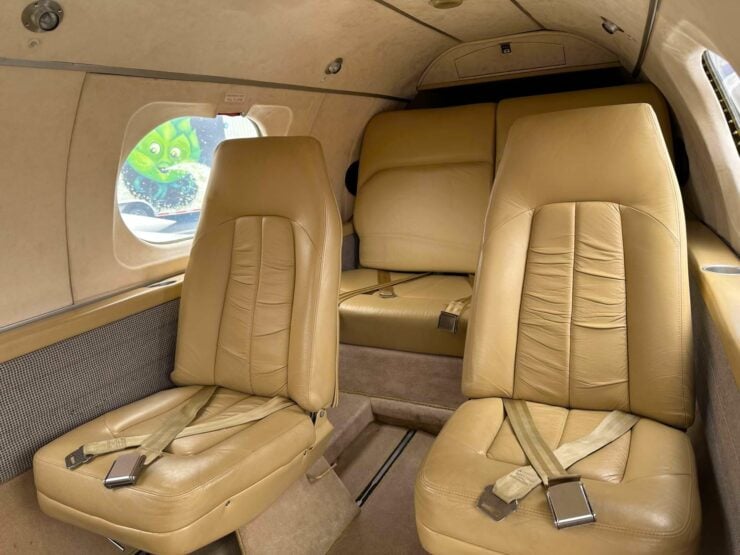

Inside you’ll find room for six passengers and two pilots, and this aircraft apparently flew Brigitte Bardot and Gunter Sachs to their wedding in Las Vegas on July the 14th, 1966.
It’s now due to roll across the auction block with Mecum in mid-November in Las Vegas, and you can visit the listing here if you’d like to read more about it or place a bid. Editor’s Note: There is some contradictory information in this listing for this aircraft, and all key facts should be verified before bidding.
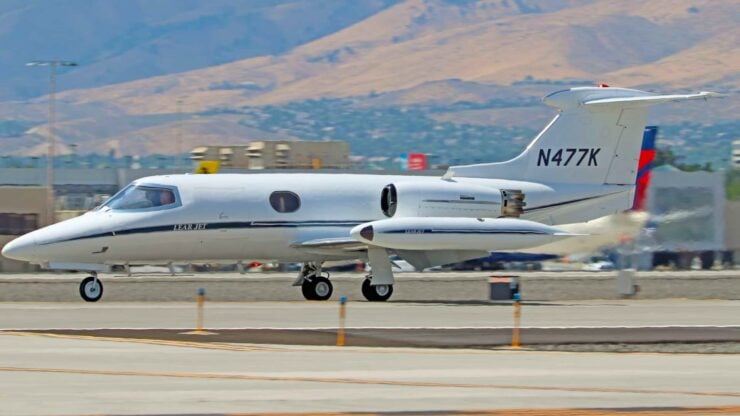
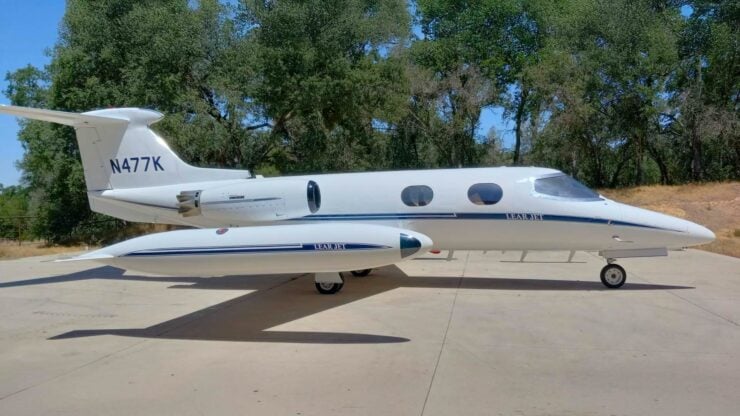
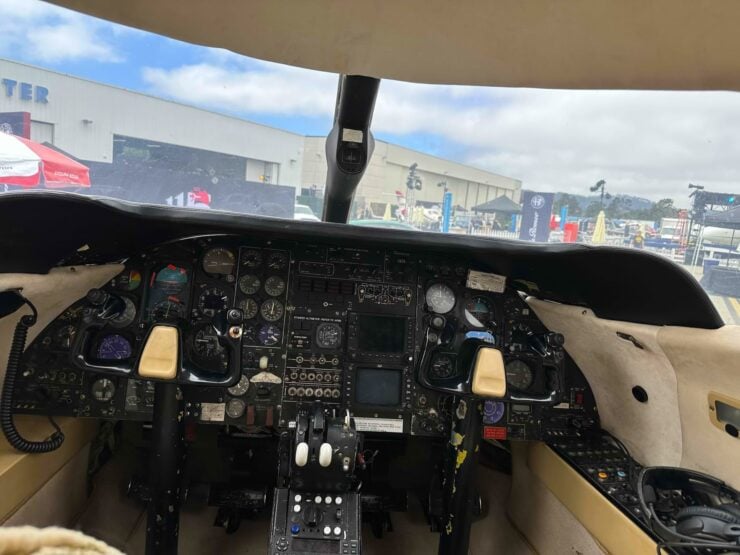
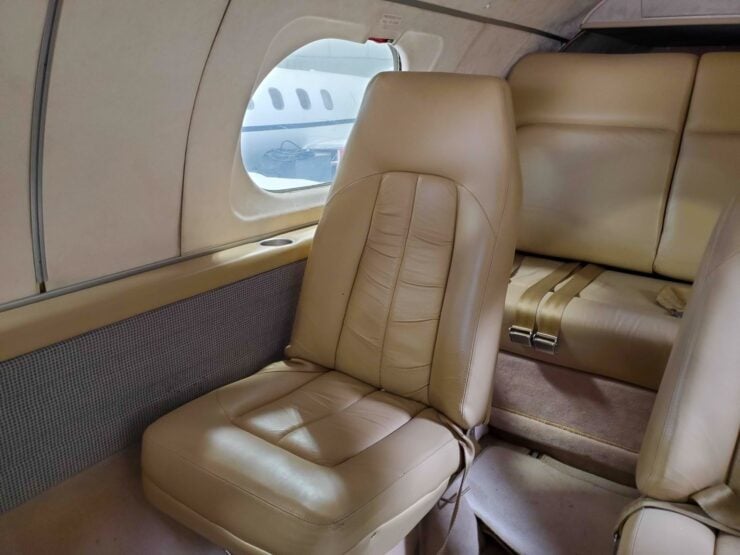
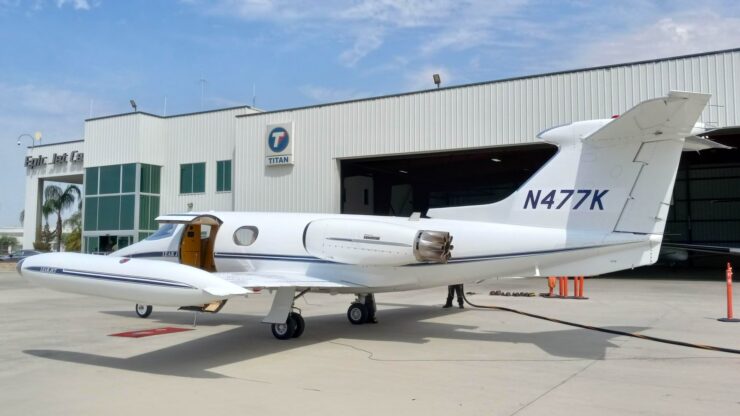
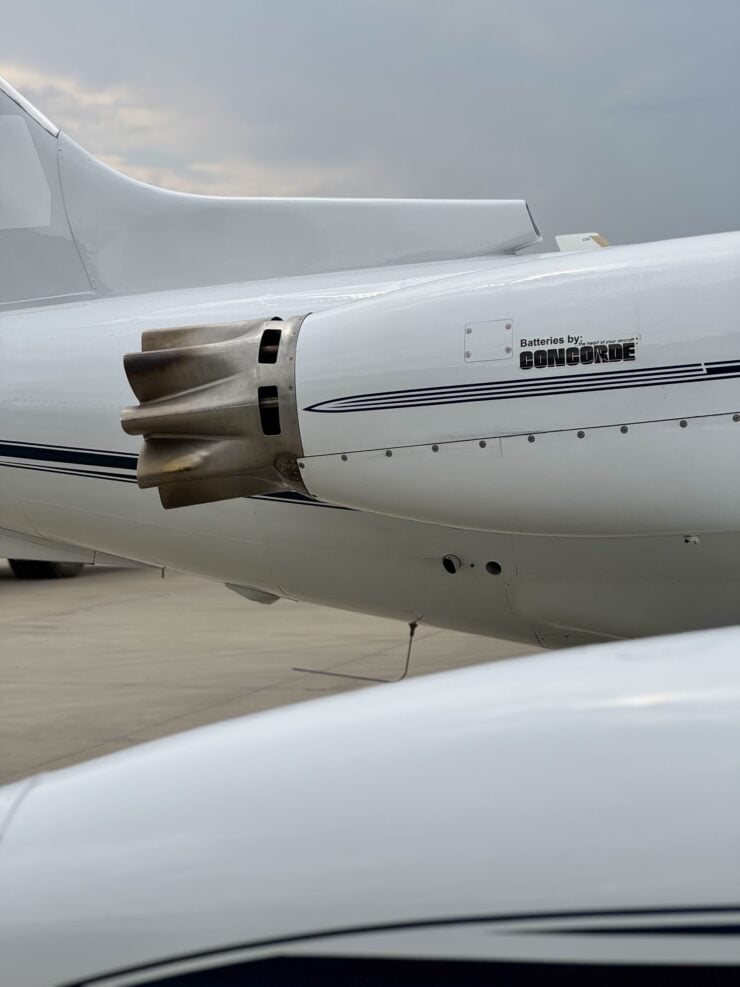
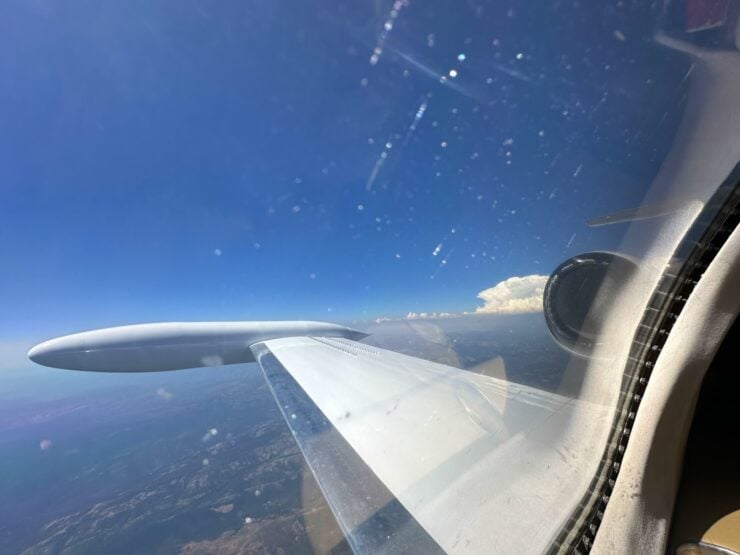
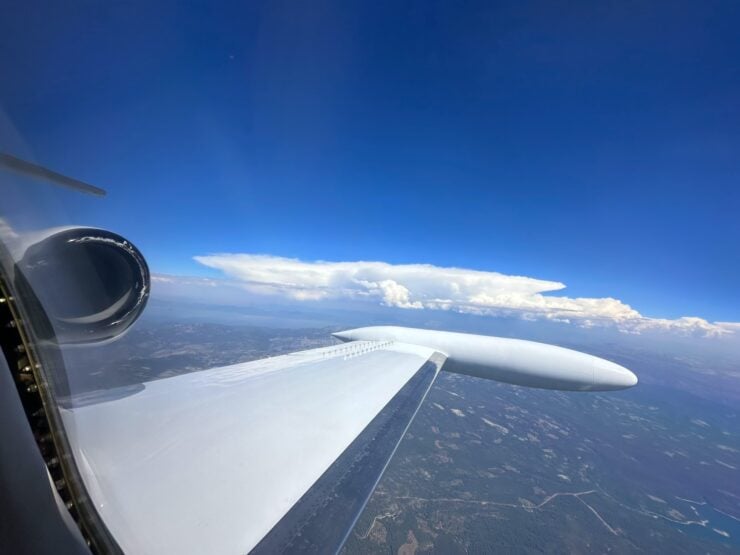
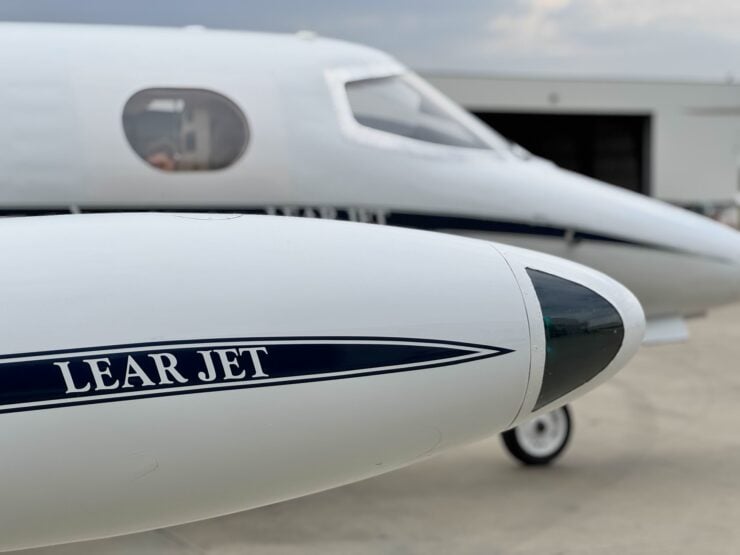
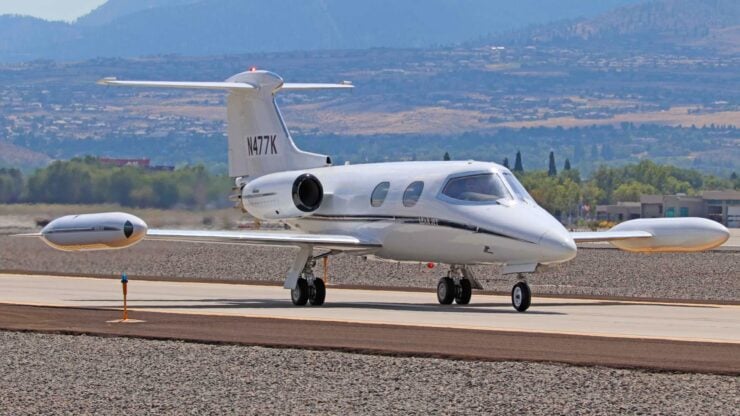
Images courtesy of Mecum

